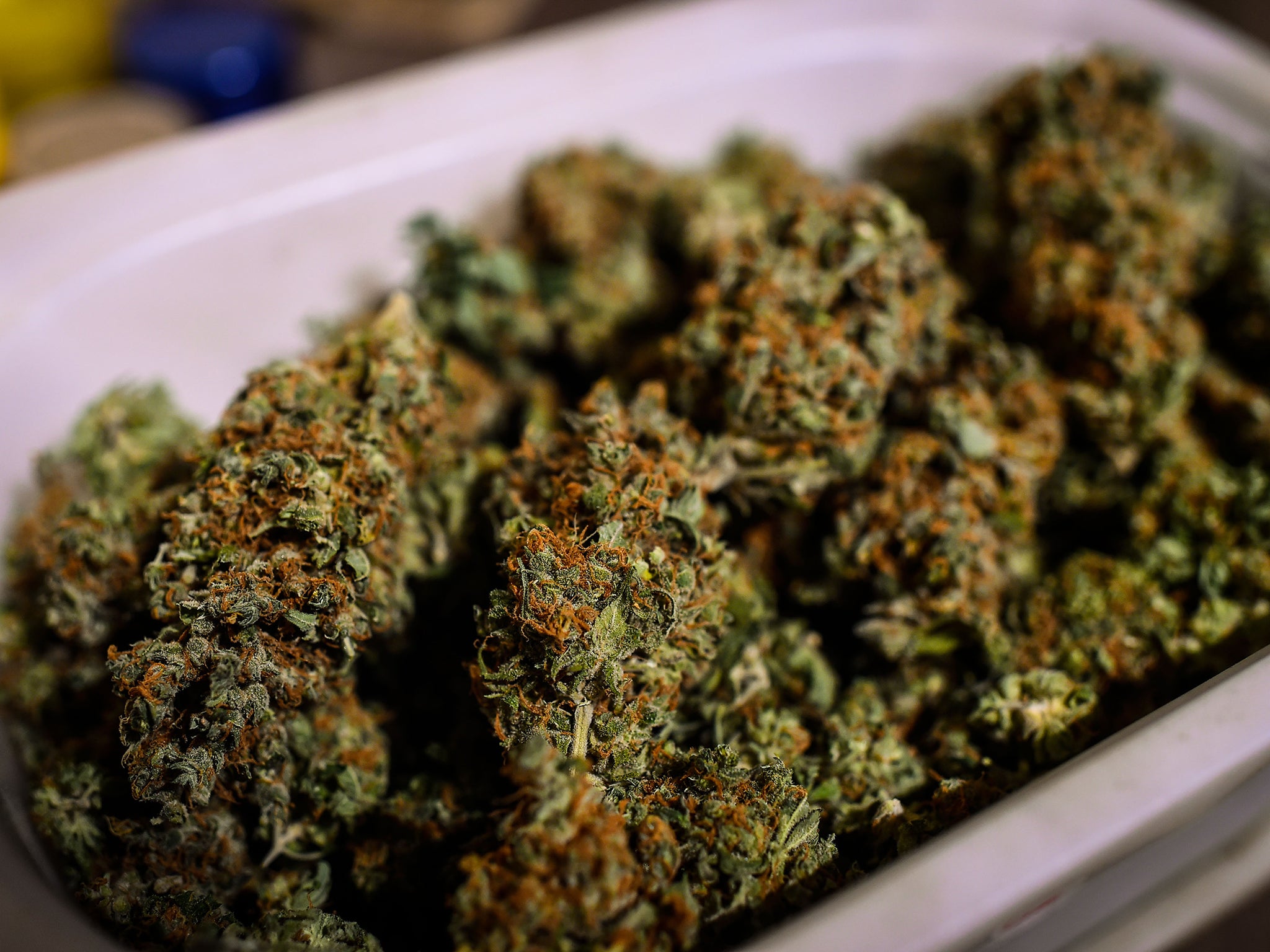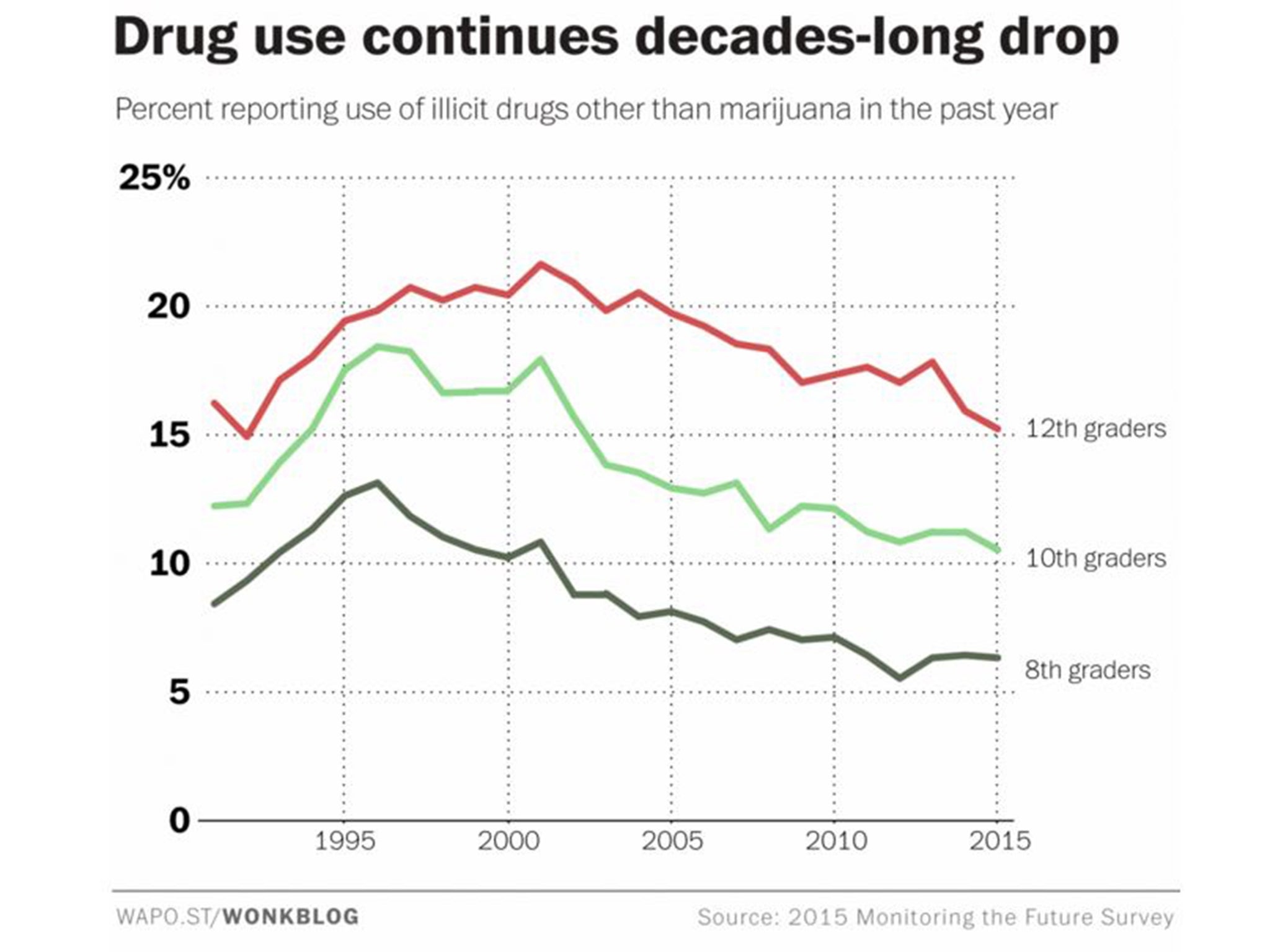Two charts that show why case for legalising marijuana just got stronger
America's high school students are using drugs and alcohol at or near the lowest levels on record

America's high school students are using drugs and alcohol at or near the lowest levels on record, according to federal data released Wednesday. The 2015 Monitoring the Future Survey, conducted by the University of Michigan and the National Institute on Drug Abuse (NIDA) since 1975, found that past-year use of alcohol and illicit drugs other than marijuana continued their two-decade-long decline among America's 8th-, 10th- and 12th-graders.

Teen marijuana use has fallen slightly over the past five years, at a time when four states and the District of Columbia have legalised marijuana and 23 others allow medical use.

“We are heartened to see that most illicit drug use is not increasing, non-medical use of prescription opioids is decreasing, and there is improvement in alcohol and cigarette use rates,” NIDA Director Nora D. Volkow said in a statement. In 2015, teen use of both alcohol and cigarettes reached their lowest levels since the study began 40 years ago. And use of especially dangerous drugs, like heroin, amphetamines and so-called synthetic marijuana, also declined this year.
The Monitoring the Future (MTF) survey poses questions about substance use to more than 40,000 8th- , 10th- and 12th-graders at public and private high schools in the United States. The sheer size of the survey, and the fact that it was conducted in the spring of this year, make it an invaluable tool for understanding trends in teen drug and alcohol use. The other major federal barometer of substance use, the National Survey on Drug Use and Health, has a one- or two-year lag compared to MTF.
The immediacy of the data makes the survey particularly useful for understanding how the national conversation on marijuana legalisation is affecting teen pot use, if at all. This, after all, is a primary concern of legalisation opponents. Rep. Andy Harris (R.-Md.) summed up this mind-set during a speech at the Heritage Foundation last year when he said that "relaxing [marijuana] laws clearly leads to more teenage drug use. It should be intuitively obvious to everyone that if you legalise marijuana for adults, more children will use marijuana because the message that it's dangerous will be blunted."
But the data from MTF and other federal surveys contradict this claim. Though more adults are smoking pot, the MTF data suggests that teens aren't following suit. Teen marijuana use at the national level has fallen slightly since 2010, and their use of other illicit drugs has declined steadily.
There's a paradox in these numbers: The data show that the percentage of teenagers who see a great risk of harm in using pot is at record lows this year, according to the survey. With that sort of decline, you'd typically expect to see a concomitant rise in use, lead investigator Lloyd Johnston said in an interview. But that's not happening.
"It's a bit of a conundrum," Johnston said. He points to one fact that may partly explain the disparity: "Students' conception of how easy it is to get marijuana has actually been in decline the past few years." They're less worried about risks, but also less able to get weed when they want it. The net effect may be the flat use rates.
None of this is to imply that public health experts aren't worried about teen marijuana use, however. "A continued area of concern is the high rate of daily marijuana smoking seen especially among 12th graders, because of marijuana’s potential deleterious effects on the developing brains of teenagers,” NIDA's Volkow said in a statement. Six percent of high school seniors are smoking pot daily, according to the survey. Kids who use that frequently are putting themselves at the highest risk of the adverse effects of marijuana use.
© Washington Post
Join our commenting forum
Join thought-provoking conversations, follow other Independent readers and see their replies
Comments
Bookmark popover
Removed from bookmarks